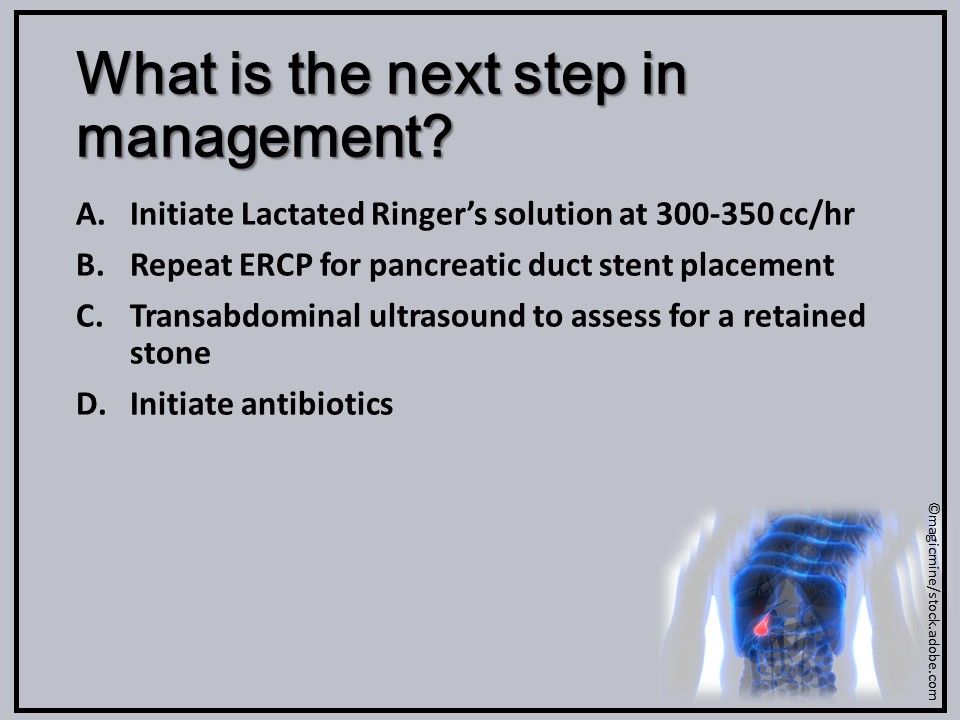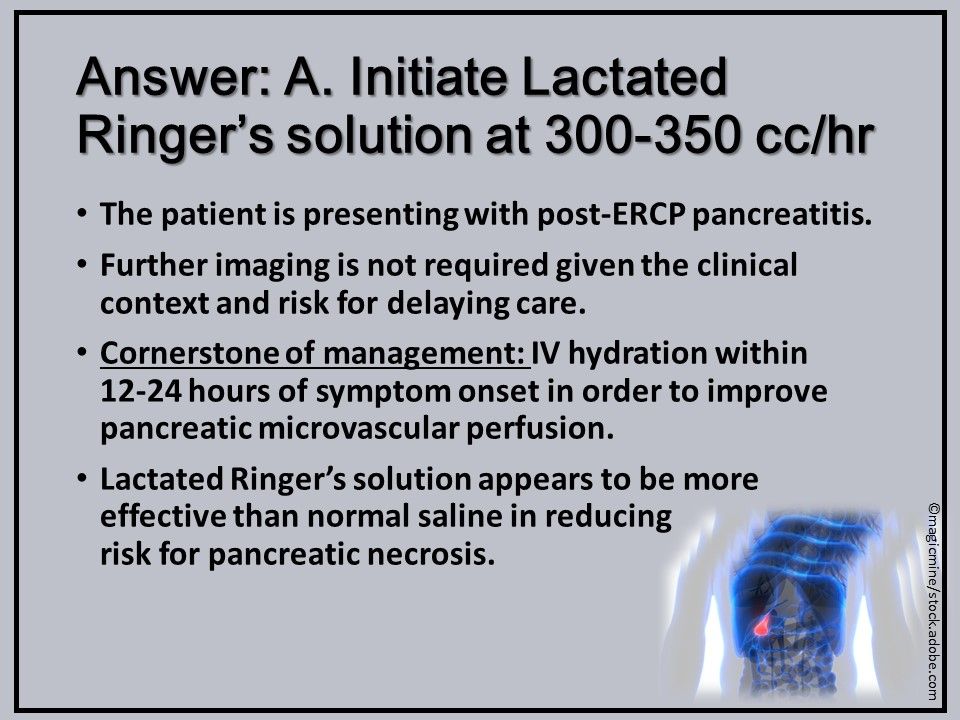© 2025 MJH Life Sciences™ , Patient Care Online – Primary Care News and Clinical Resources. All rights reserved.
GI Case Quiz: ERCP with Complications
After endoscopic retrograde cholangiopancreatography with stone extraction, the picture gets complicated for this 40-year-old woman.

Abdominal pain, history of stones. A 40-year-old woman presents with abdominal pain and is found on abdominal ultrasound to have a common bile duct stone. Endoscopic retrograde cholangiopancreatography (ERCP) is complicated and requires a precut sphincterotomy. Elective cholecystectomy is scheduled for one week.

Post-op epigastric pain. 12 hours after ERCP, the patient experiences sharp, stabbing epigastric pain radiating to her back.

What is the next step in management for this patient? Would you initiate Lactated Ringer’s solution at 300-350 cc/hr; repeat ERCP for pancreatic duct stent placement; perform transabdominal ultrasound to assess for a retained stone; or, initiate antibiotics?

Answer: A. Initiate Lactated Ringer’s solution at 300-350 cc/hr.The patient is presenting with post-ERCP pancreatitis and care should not be delayed. IV hydration within 12-24 hours of symptom onset is essential to improve pancreatic microvascular perfusion. Lactated Ringer’s solution appears to be more effective than normal saline in reducing risk for pancreatic necrosis.

No indications for stent, antibiotics. There is no evidence for placement of pancreatic duct stent and it may worsen the clinical condition. Antibiotics are not indicated as the cause of the patient's inflammatory reseponse is the acute pancreatitis.
Follow Dr James on Twitter:@TedWJamesMD
Recommended reading
Crockett SD, Wani S, Gardner TB, et al. American Gastroenterological Association Institute Guideline on initial management of acute pancreatitis. Gastroenterol. 2018;154:1096-1101.
Related Content:




